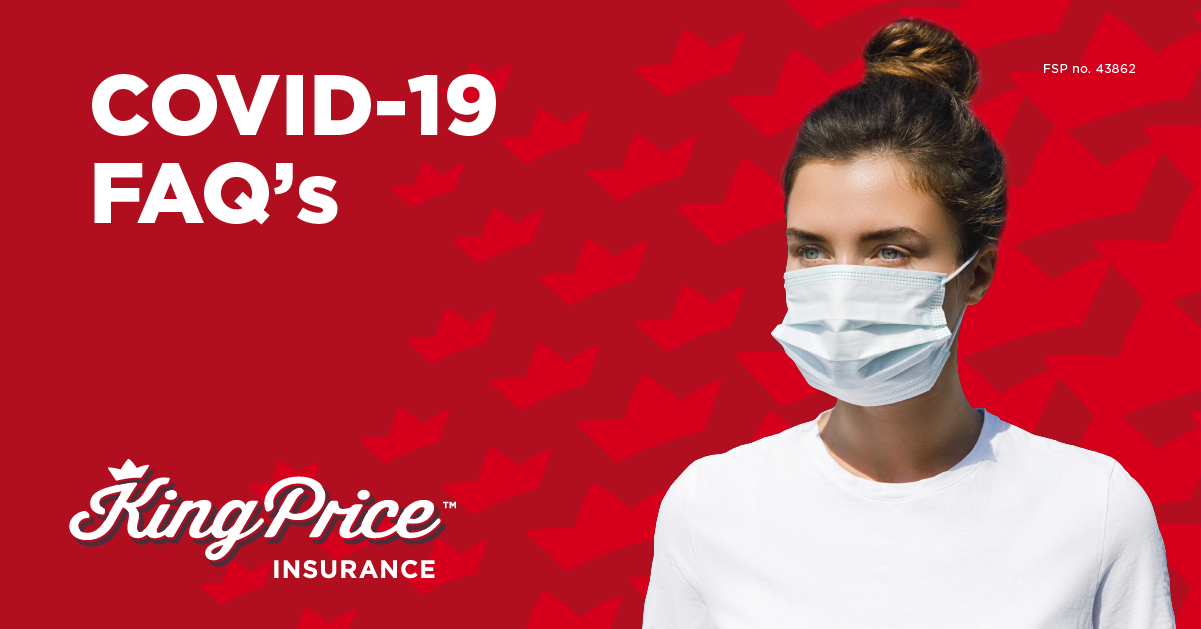A little COVID-19 FAQ for all the newbies out there

In the recent presidential address and in the news generally, we’ve been introduced to a heap of new words related to COVID-19. It’s basically like we need to learn a new language. Previously, we thought that a lot of these words were made up to tell those awful zombie stories, but turns out that words like epidemic, self-monitoring, quarantining, and social distancing are real.
We know full well how good it is for people to understand the important things. It’s why we go to such trouble to make sure that all our insurance stuff is written in plain English, with relatable examples. We don’t want anyone to misunderstand their cover and get into a spot of bother, thinking they’ve covered their TV with buildings insurance, which is actually for the structure of your home (and not what’s inside it). So, we figured that if everyone had a good understanding on a few of the terms used around COVID-19, you’d all be able to make decisions on how to keep yourselves and your loved ones safe in a way that makes sense to your unique circumstances.
Outbreak
An outbreak is a sudden rise in the frequency of a disease occurring and it’s usually confined to 1 group of people or 1 area. According to the news reports, the COVID-19 outbreak started in Wuhan, China.
Epidemic
When there are enough outbreaks happening in places beyond the initial spot or beyond the initial group of people who got sick, it’s classified as an epidemic. Just a few weeks ago, COVID-19 was a baby epidemic.
Pandemic
And then we have a pandemic, which is basically an epidemic that’s gone international. Currently, we’re in a pandemic situation.
Social distancing
Social distancing is kind of a broad term… But it generally means to not shake hands, avoid crowds, stand a meter or so away from other people, and stay home if you feel sick. It’s a key way to slow down the spread of a disease and is more or less what the president told us to do in his presidential address.
Incubation
This is the length of time between when an infection begins and when there are apparent signs of the disease. According to the CDC (the Centers for Disease Control and Prevention) COVID-19 has a 2 to 14-day incubation period.
Self-monitoring
Self-monitoring is when you regularly check your temp and watch for other signs of the virus, like fever, coughing, or shortness of breath. When you self-monitor, you should also limit your interaction with others.
Want to know when you should self-monitor? An example is if you’ve been to a large conference or farmer’s market and someone else there was later found to be positive for COVID-19. Even though you probs didn’t come into contact with that person, you might still want to strictly self-monitor. If any symptoms appear, you should self-isolate and call your doctor, local hospital or public health department to find out what to do.
Self-isolating
If you’re self-isolating, it’s because you’ve been exposed to the virus and you’ve decided to voluntarily stay home for 14 days.
Quarantining
If you’re quarantining, then the measures are more serious than self-isolating. Basically, it’s when you’ve probs been exposed to someone with the virus and are obliged to stay put (apart from emergencies). You can’t have any face-to-face interactions and you need to keep a meter or so distance between yourself and anyone else. It’s usually for a 14-day period, but you should talk to your doctor, local hospital, or health department.
We’ve got a recent example to explain this better… Remember those cruise ships where passengers fell ill with COVID-19? Well, the passengers who didn’t fall ill on the ship itself had to stay at military bases for 14 days to check if they developed the disease. They were quarantined.
Isolation
Right, so lots of people get confused between quarantining and isolation. Let’s clear that up for you, because while quarantining is used to separate healthy people who’ve been exposed to the virus to see if they develop symptoms, isolation is used to separate ill people who’ve been diagnosed with COVID-19. Isolation is when you stay put, are closely monitored, and have no face-to-face interactions so that you don’t infect anyone else.
Ultimately, we want you to stay safe and healthy, and we hope that understanding these terms will help you make safe decisions as you navigate the next few months while our country and the world comes to grips with this virus. Also, if you’re scared, then talk to someone. There’s no use in panicking because, as we’ve seen… This just leads to people panic-buying toilet paper and other essentials by the tonne, and that’s not the most helpful thing we can do as a nation.
Also, if you suspect that you or someone in your family has the virus, call your doctor, local hospital or public health department to find out what to do.







